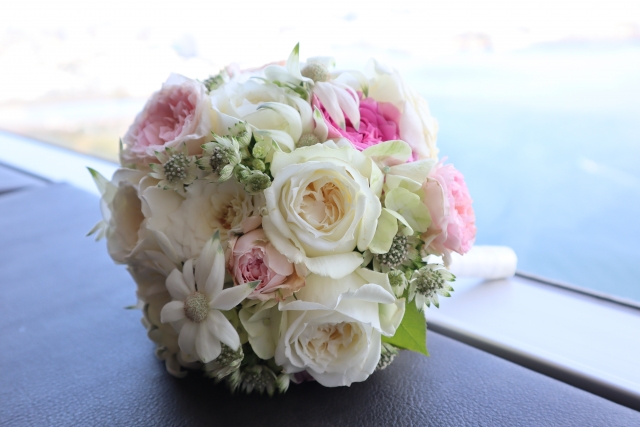If you’re invited to a wedding in Japan, it’s important to understand the local customs and traditions. Wedding etiquette in Japan is quite different from what you may be used to in other countries. The ceremonies can take various forms, including traditional Shinto (神式), Western-style Christian weddings, or a blend of both. Understanding the expectations around dress, gift-giving, and behavior will help you feel prepared and respectful as a guest. In this guide, we’ll cover the key aspects of attending a Japanese wedding, so you can make a great impression and fully enjoy the celebration.
1. Types of Japanese Weddings: Shinto, Western-Style, and Buddhist
Shinto Weddings (神式, Shinshiki)

Shinto weddings are the traditional Japanese wedding ceremony, typically held at a shrine. The bride often wears a white kimono called shiromuku, and the groom wears a formal montsuki kimono. The ceremony is intimate, involving only close family and friends. Rituals like san-san-kudo (the sharing of sake between the couple) are performed to symbolize their union. As a guest, your role is to observe quietly and respectfully. Shinto weddings are usually followed by a larger reception with extended family and friends.
Western-Style Christian Weddings

Many Japanese couples opt for a Western-style Christian wedding, even if they aren’t religious. These ceremonies are often held in chapels or event spaces designed to look like churches, with brides wearing white wedding dresses and grooms in suits. The format is similar to Christian weddings abroad, with vows, rings, and the exchange of “I do’s.” However, the reception often follows more traditional Japanese customs. If attending a Western-style wedding, you’ll likely experience a mix of Western elements and Japanese formality.
Buddhist or Hybrid Weddings
Some couples may choose a Buddhist ceremony or a mix of different styles, depending on their personal beliefs and family preferences. Buddhist weddings are less common but are still practiced, particularly in families with strong ties to Buddhism. These ceremonies may include prayers and blessings by monks, and they typically maintain a more spiritual atmosphere.
Buddhist weddings (Butsuzenshiki) are generally solemn ceremonies attended only by close family members. Therefore, unlike chapel weddings, friends and colleagues are not typically allowed to attend the ceremony. Instead, they are usually invited only to the reception.
2. Appropriate Dress for a Japanese Wedding
Regardless of the style of wedding, it’s important to dress formally and conservatively. For men, this usually means a dark suit with a white shirt and tie. For women, a knee-length dress in subdued colors is ideal. Avoid wearing all white, as this color is reserved for the bride. Likewise, flashy or overly bright colors are generally considered inappropriate.
If you’re attending a Shinto or Buddhist ceremony, it’s common to see some guests wearing traditional Japanese attire like kimonos, though it’s not required for foreigners. Women wearing kimono usually opt for a homongi or tomesode style, depending on their relation to the couple.
3. Gift-Giving: Monetary Gifts and the Envelope Etiquette

In Japan, it’s customary to give a monetary gift (goshugi) to the bride and groom, rather than a physical gift. The amount typically ranges between ¥30,000 to ¥50,000 (about $200–$500 USD), depending on your relationship with the couple. Close family members may give more.
The money should be placed in a special envelope called goshugi-bukuro, which you can purchase at stationery stores or convenience stores in Japan. You can also buy it at 100yen shop(Daiso,CanDo,Seria).The envelope itself is very important, and it should feature a red-and-white or gold-and-white knot, symbolizing celebration. It’s also important to avoid odd-numbered amounts like ¥40,000, as the number 4 is associated with death in Japanese culture.
4. Reception Manners: Formality, Speeches, and Seating
Japanese wedding receptions (hirouen) tend to be more formal than in many Western countries. They often include speeches from family members, bosses, and close friends, followed by a series of carefully planned toasts and performances. The couple usually sits at the front of the room, and guests are often seated by social hierarchy, with close family and senior colleagues seated closest to the couple.
As a guest, it’s important to remain quiet during speeches and to clap at the appropriate moments. Unlike Western weddings, you won’t be expected to participate in dancing or casual mingling during the reception. Instead, the event is more structured, with the couple making rounds to greet each table and thank guests personally.
Conclusion:
Attending a Japanese wedding is a unique cultural experience, and understanding the customs will help you feel confident and respectful. Whether it’s a Shinto, Western, or hybrid ceremony, being mindful of appropriate dress, gift-giving, and formal behavior will ensure that you honor the couple on their special day. Following these guidelines will not only show respect but also allow you to fully enjoy this beautiful celebration of love in Japan.








